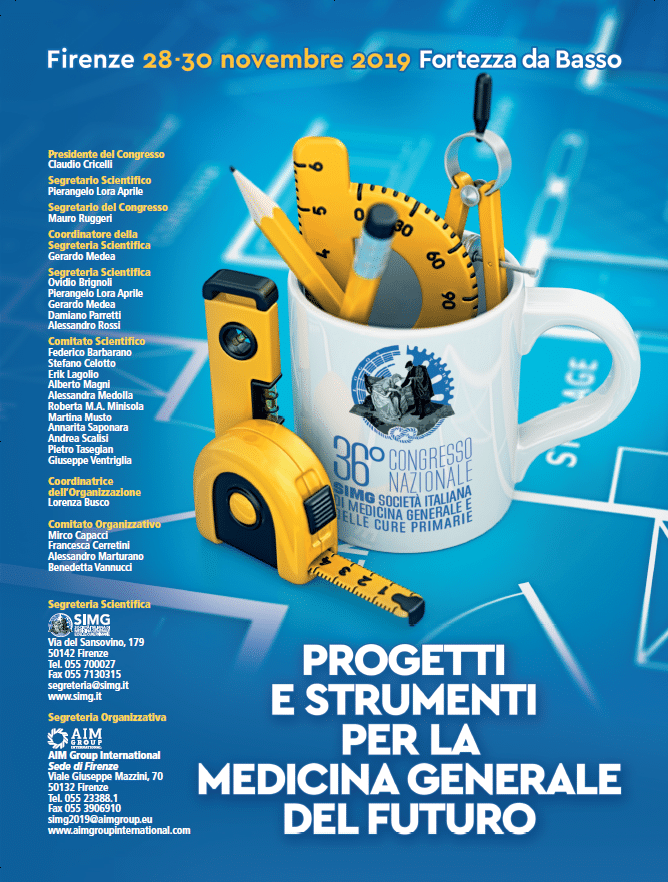L’equivalenza terapeutica tra generici e originator, relativamente a numerose patologie croniche – specie in ambito cardiovascolare – è ampiamente dimostrata da numerosi studi. Ma qual è esattamente l’atteggiamento prescrittivo dei Medici di Medicina generale? E soprattutto, qual è la tendenza dello 
To investigate this hitherto unexplored territory was the Team study – realizzato d’accordo con Assogenerici dall’Istituto di ricerca della Società Italiana di Medicina Generale e delle Cure Primarie (SIMG), utilizzando il database Health Search (HSD) – che ha analizzato il profilo di prescrizione dei farmaci equivalenti in medicina generale relativamente ai contesti clinici di ipertensione arteriosa, malattie ischemiche cerebro/cardiovascolari e depressione.
Lo studio – presentato nell’ambito del 36° Congresso Nazionale SIMG “Progetti e Strumenti per la Medicina Generale del Futuro”, in corso fino a sabato 30 novembre presso la Fortezza da Basso a Firenze – ha valutato i pattern di utilizzo (prevalenza ed incidenza d’uso) dei farmaci equivalenti in Medicina generale nel decennio 2008-2018 , quantificando anche il grado di switching, in funzione dell’indicazione terapeutica, tra farmaco equivalente e brand e tra il farmaco brand e l’equivalente per quanto concerne l’ipertensione arteriosa, le malattie ischemiche cerebro/cardiovascolari e la depressione.
L’analisi è stata realizzata sul database contenente le informazioni cliniche relative ad oltre 1 milione e mezzo di assistiti (Health Search Database- HSD) fornite da 800 medici di medicina generale – selezionati su tutto il territorio nazionale in base alla numerosità dell’area geografica di riferimento (Nord-est, Nord-ovest, Centro, Sud, Isole) – che registrano quotidianamente le informazioni relative alla pratica professionale quotidiana, codificando anche le prescrizioni farmaceutiche.
«The study clearly shows that the increase in generic prescription over time is justified by new users. That is, they are patients who are starting treatment with one of the for the first time
However, particular aspects emerge precisely on the switch: the study in fact documents a slightly higher prescriptive switching from generic to brand.
«The phenomenon concerns in particular those categories of drugs with respect to which there may be a more relevant perception of the safety aspects of the therapy, both by the doctor and by the patient – ha commentato Claudio Cricelli, Presidente Simg. – Il fenomeno, infatti, si verifica soprattutto per i diuretici o per l’aspirina a basse dosi: trattamenti notoriamente soggetti a più effetti collaterali di varia intensità che – a fronte della percezione individuale degli stessi da parte del paziente – possono portare ad una modifica del comportamento prescrittivo del medico». «Riassumendo – ha proseguito Cricelli – the population that uses the equivalent in the first instance as a drug prescribed by the doctor is increasingly growing. The phenomenon of the change of prescription from generic to brand occurs only for categories of products which, despite being of consolidated use in the clinic, present profiles of poor handling. And in any case, these are phenomena whose incidence has been decreasing and which concern an increasingly smaller population, especially in the first year of treatment".
"Both among healthcare professionals and patients, there is still a non-negligible percentage of the population that expresses a distrust of equivalents – ha commentato Enrique Häusermann,
«Many factors influence the decision to prescribe a drug and the patient's choice to prefer a generic product over a brand reference: cultural factors, information on production and registration methods, the capillarity and continuity of product distribution – ha tirato le somme hamsters –. They are all elements that guarantee the clarity of information capable of increasing the patient's decision-making awareness and are changing over time, consolidating the trust of doctors and consumers in generic products".
